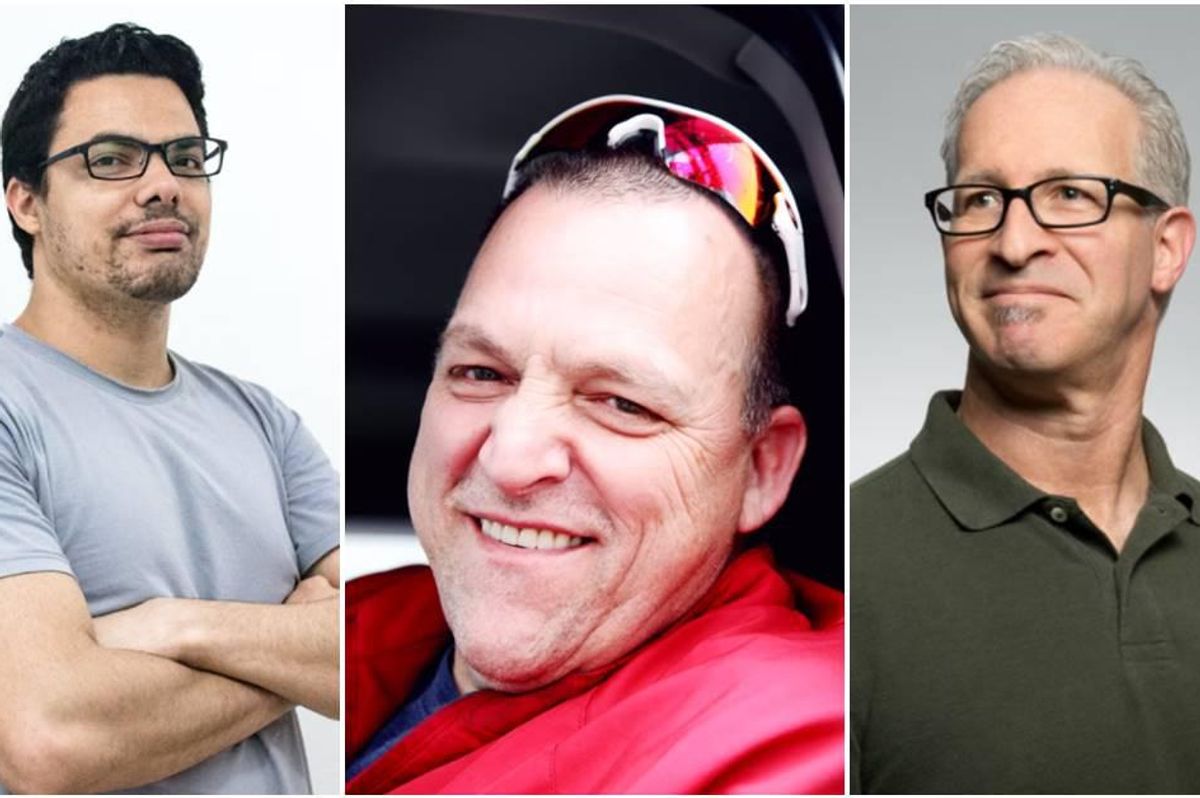10 life-saving heroes walk into a photo. Obviously we're going to celebrate them.
What's black and white and life-saving all over?
This historic photo.
Why should I care about this photo?
The 10 people in this portrait aren't just randos. They are linked to the development of many of the life-saving vaccines we have today. In other words: They are linked to saving millions of lives over the past few decades and could be one of the reasons *you* are able to stay healthy! The fact that they are all together in one picture is so incredibly rare, and iconic photographer Annie Leibovitz did a beautiful job of capturing it all.
Who are these people?
Thanks for asking! We have:
In the 1960s, Dr. Stanley Plotkin developed the rubella vaccine to destroy ... rubella(!), which is a disease that sometimes comes with a mild fever and rash and often is referred to as German measles or three-day measles. It's not really known for being super-extreme, but it's still annoying. Here's what rubella and congenital rubella syndrome (CRS) have looked like in the United States, according to the CDC:
Thanks for the help on that decline, Dr. Plotkin!
Deborah Sabin is the daughter of the late Dr. Albert Sabin. Dr. Sabin developed the oral polio vaccine in 1961. Polio! Polio is the worst. It used to paralyze kids left and right and was one of the most feared diseases in industrialized countries. Thanks to effective vaccines and delivery, many think global eradication of the disease is within reach. Global cases have decreased by 99%, and there are just three countries left that have never stopped polio transmission. It's gonna be tough to get that last 1%, but I think we can do it. Don't you?
Dr. Ruth Bishop led a team that isolated rotavirus, a contagious virus that can cause inflammation of the stomach and intestines. The WHO calls it a leading cause of severe diarrheal disease and dehydration in infants and young children throughout the world ... aka messy and horrible. Good thing Dr. Bishop helped to discover the vaccine for it. Badass alert!
Dr. Kim Lee Sim and Dr. Stephen Hoffman are both working on a new malaria vaccine, which is *SO* needed as half the world's population live in areas at risk of malaria transmissions, some of which can be fatal. To all the infected mosquitoes out there: Consider this your warning. This duo is coming for you.
Dr. Peter Salk is the son of the late Dr. Jonas Salk. He developed the inactivated polio vaccine. Polio again! This polio vaccine is injected into the arm or leg and is the more common vaccine in the United States. Needless to say, it's helped us out a lot.
Dr. Marc Laforce is the founding director of the Meningitis Vaccine Project, where they work to fight meningitis, a potentially life-threatening inflammation of the brain and spinal cord membranes.
Dr. Xiao Yi-Sun is the spouse of the late Dr. Jian Zhou. Zhou co-developed the human papillomavirus (HPV) vaccine with Dr. Ian Frazer. The HPV vaccine has been talked about a lot in the past few years, mainly because HPV is so common that nearly all sexually active men and women get it at some point in their lives. In the United States, it is now recommended that boys and girls ages 11-12 get vaccinated against it to help protect them from most of the cancers caused by HPV and genital warts.
In the United States, from 2006-2010. Props to the CDC.
Dr. Peter Paradiso has worked on multiple vaccines, particularly for pneumococcal disease. What's that, you ask? It's a very serious infection that can cause pneumonia, meningitis, and bloodstream infection. The National Foundation for Infectious Diseases has a whole bunch of info on it. And it all sounds 0% fun.
Jeryl Hilleman is the daughter of Dr. Maurice Hilleman. Dr. Hilleman developed or perfected more than 30 vaccines, including eight used in vaccine programs around the world today. 30 VACCINES. Jeeze. Kind of like a 30-day vaccine challenge or something, and Maurice followed through.




 Beaver on riverbank.
Beaver on riverbank.  Pbs Nature Swimming GIF by Nature on PBS
Pbs Nature Swimming GIF by Nature on PBS  An actual beaver dam on the now-thriving Price River
An actual beaver dam on the now-thriving Price River 
 Boys will be boys.
Boys will be boys. 


 A child on an iPad.
A child on an iPad.  A mom showing her child how to play the drum.
A mom showing her child how to play the drum.  A mom scolding her son.
A mom scolding her son.  A mom guilt-tripping her daughter.
A mom guilt-tripping her daughter.  A teacher establishing rules to her class.
A teacher establishing rules to her class. 